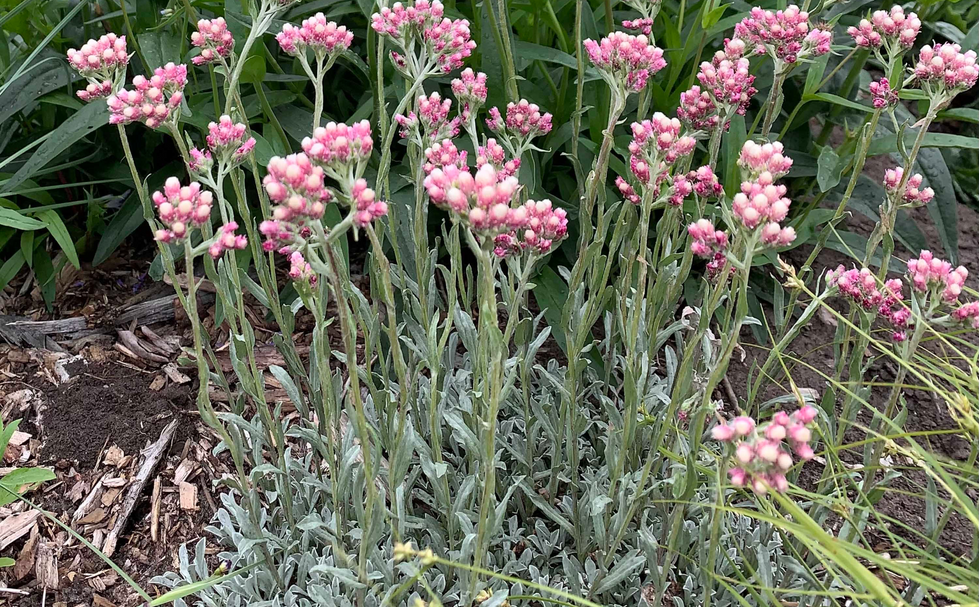Details
Emerges
April
Seed collection
Flowers
June
Pink
July
Height
4
-
30
cm
Lifecycle
Perennial
Width
20
-
30
cm
Habit
Forbs
Mat-forming
Stoloniferous
Spreading
Herbaceous
Ecology
Supports
Bees
Butterflies & Moths
Providing
Larval host plant
Pollen source
Antennaria rosea, is a plant in the Asteraceae family, known by the common name rosy (pink) pussytoes. It is native to much of North America, most of Canada, including the Arctic, and the western United States. It is a plant of many habitats, from dry to wet climates and low elevation to very high.
Habitat
Typically found in
meadows, slopes / banks
In the Garden
Growing Conditions
Moisture
Dry
Average
Light
Full sun
Soil
Average garden soil
Propagation
Via
Seeds
Division
Sowing Recommendations
Fall planting
Low or difficult germination
Landscape
Use for:
Groundcover
Naturalization
Growing Tips
Damp/cold stratify in the spring, or sow in the fall. Press seeds lightly into the soil.
Description
Pink pussytoes form wonderful, evergreen mats covering the ground. Each colony of pussytoes is a “clone” with all the plants connected to one another by underground rhizomes. Foliage is woolly, and grey in appearance.


